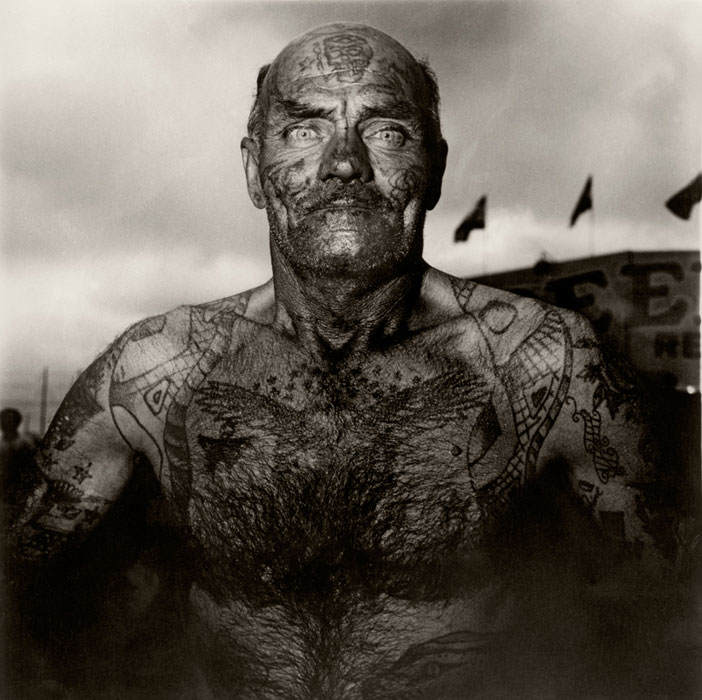I'm going to push back the grammar lesson to Thursday and move the other two lessons up for this week so that you don't have a blog post due the night before your big paper is due. (*Hint: Your big research paper is due soon, you should probably go find some sources or something.)
So... check out the article by Susan Sontag that used to be in an old version of the Envision in Depth books. But since it was removed from the version you're using, I'm giving you a pdf. Here. Read it. I think it's really interesting.
Susan Sontag wrote some really interesting things about photography. And in that particular essay, she writes about Walt Whitman and photographer Diane Arbus.
Whitman, you might remember from high school English, wrote poetry about everyday things and found them beautiful. Poets hadn't really done that so much before. Usually they wrote pretty things about pretty things. But Whitman wrote pretty things about not so pretty things.
Like in this poem:
"A Noiseless Patient Spider"
A NOISELESS, patient spider,
| |
I mark’d, where, on a little promontory, it stood, isolated;
| |
Mark’d how, to explore the vacant, vast surrounding,
| |
It launch’d forth filament, filament, filament, out of itself;
| |
Ever unreeling them—ever tirelessly speeding them.
| |
And you, O my Soul, where you stand,
| |
Surrounded, surrounded, in measureless oceans of space,
| |
Ceaselessly musing, venturing, throwing,—seeking the spheres, to connect them;
| |
Till the bridge you will need, be form’d—till the ductile anchor hold;
| |
Till the gossamer thread you fling, catch somewhere, O my Soul.
|
See? He compares a spider to his soul. Spiders aren't necessarily usually praised. So, Whitman looked at life differently, and used some really strong pathetic rhetorical appeals to persuade other people to see things the way that he did. Arbus also looked at things differently. Sontag compares them in her essay. Arbus also committed suicide fairly young, so you wouldn't want to follow her lead in every way, still, she stepped out of the bounds and made her rhetorical mark on the world.
They even made a movie (loosely based) on her life, where Arbus is played by Nicole Kidman though I haven't seen it.
.
So, Arbus was a freak. And she took pictures of freaks. Not really... buy what is she doing? Why is she taking pictures of these people in this way? What's going on with her images? Here are a few of her photographs:
This is Diane herself. I got to see some of her actual work in a gallery in Charlotte last year.


My personal favorite. That little kid is holding a toy hand grenade.







These are not the kinds of people that are put on magazine covers. So, how does Arbus, along with Whitman, view the world? How do they view it differently than most people? And how are they communicating the world differently than most people?
I want you all to write differently, to see differently, and to communicate differently. You don't have to like Arbus. I wouldn't hang her photographs up in my house. But she does do something unique. Rhetorical moves help shape the way we see the world, so in essence rhetoric is always shaping our reality.
Rhetorician Lloyd Bitzer wrote that "Rhetoric is a mode of altering reality, not by the direct application of energy to objects, but by the creation of discourse which changes reality through the mediation of thought and action. The rhetor alters reality by bringing into existence a discourse of such character that the audience, in thought and action, is so engaged that it becomes mediator of change. In this rhetoric is always persuasive."
What do you think?
What is reality, anyway? Is it physical objects? How do you know what's real when the entire world around you is rhetorical... that is to say shaped. How could you persuade someone else that something was real? Isn't this what we do all the time? And can you really always trust your senses? We've talked a lot about visual rhetorics that trick us, and what about rhetorics that trick our ears, or even our taste buds?
Does Arbus's photograph portray reality? Does any photograph?
Grammar Review:
Active Verbs, again...
This is an interesting short story written with all active verbs, some pronouns, and even some sentence fragments.
Enjoy.
A short story by J. Robert Lennon
_____________________________
He noticed. He stared. She noticed. She smiled. He approached. She rebuffed. He offered. She accepted. He said, she said, he said, she said. They drank. They said. They drank. He touched. She laughed. They danced. He pressed. She kissed. They left. They did. He left. She slept.
He called. He called. He called. He begged. She refused. He called. He wrote. He visited. He called, called, called, called. She reported. He arrived, shouted, vowed, departed. He plotted. He waited. He visited. She gasped. He demanded. She refused. He grabbed. She screamed. He slapped. She ran, locked, called, waited. He panicked. He fled, hid, failed.
She accused. He denied. She described. He denied. She won, he lost.
They aged. She wed, reproduced, parented, saddened, divorced. He bided, waited, hardened. Fought. Smoked. Plotted, planned. Escaped. Vanished.
They lived. She thrived, he faded. He wandered; she traveled.
They encountered.
He sat, she sat, they ignored. He noticed. She noticed. He gaped. She jumped. She warned, he assured. She reminded, he admitted. She threatened, he promised. She considered. She sat. She asked. He told. He asked. She told. He smoked. She smoked. He apologized. She cried. He explained. He begged. He pleaded. She considered, resolved, refused. He stood. He clenched. He perspired. He spat. She flinched, paled.
He stopped. He slumped. He collapsed.
She stood. She pitied. She left.
They lived. They forgot. They died.
He called. He called. He called. He begged. She refused. He called. He wrote. He visited. He called, called, called, called. She reported. He arrived, shouted, vowed, departed. He plotted. He waited. He visited. She gasped. He demanded. She refused. He grabbed. She screamed. He slapped. She ran, locked, called, waited. He panicked. He fled, hid, failed.
She accused. He denied. She described. He denied. She won, he lost.
They aged. She wed, reproduced, parented, saddened, divorced. He bided, waited, hardened. Fought. Smoked. Plotted, planned. Escaped. Vanished.
They lived. She thrived, he faded. He wandered; she traveled.
They encountered.
He sat, she sat, they ignored. He noticed. She noticed. He gaped. She jumped. She warned, he assured. She reminded, he admitted. She threatened, he promised. She considered. She sat. She asked. He told. He asked. She told. He smoked. She smoked. He apologized. She cried. He explained. He begged. He pleaded. She considered, resolved, refused. He stood. He clenched. He perspired. He spat. She flinched, paled.
He stopped. He slumped. He collapsed.
She stood. She pitied. She left.
They lived. They forgot. They died.
Your Daily Assignment:
Blog Post: Write up a paragraph explaining how you define what reality is.

No comments:
Post a Comment